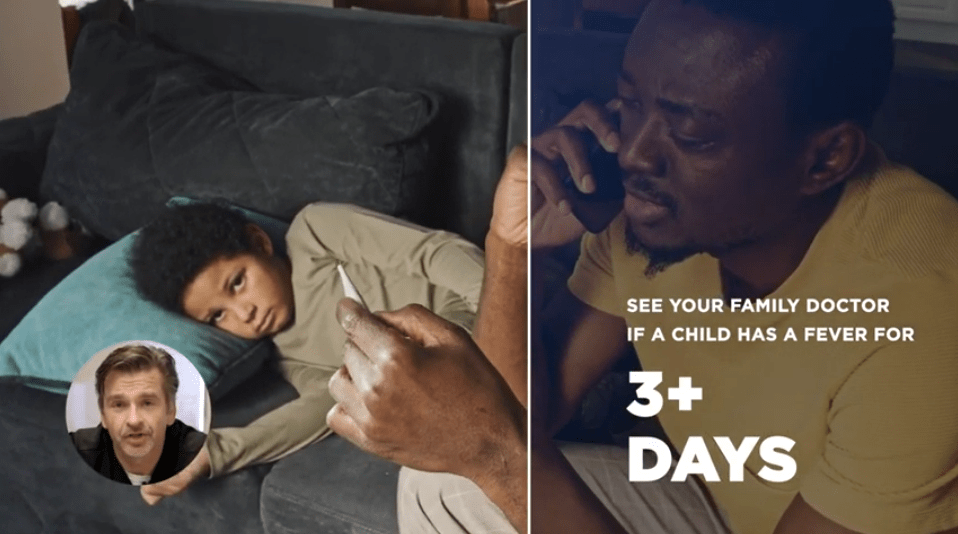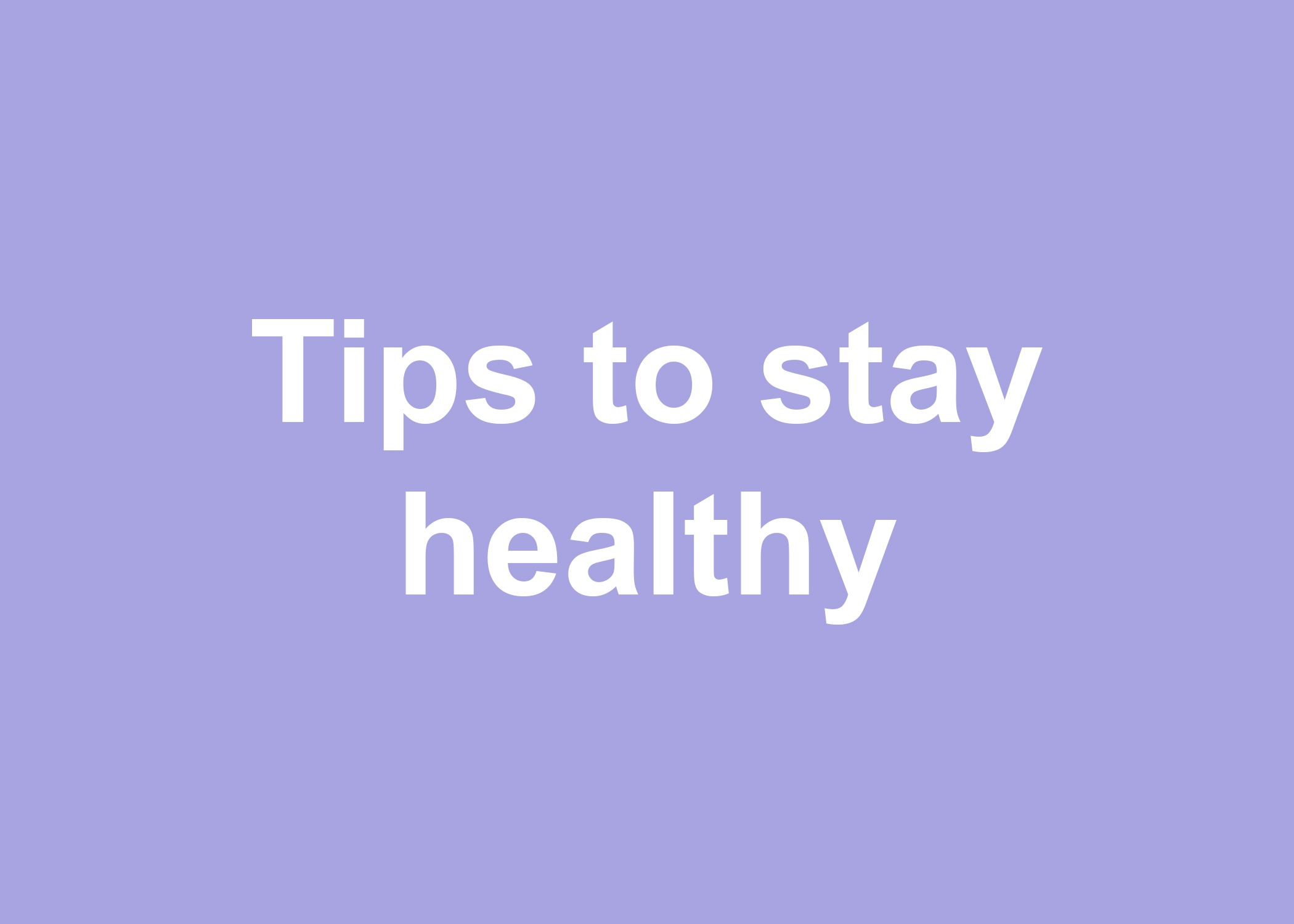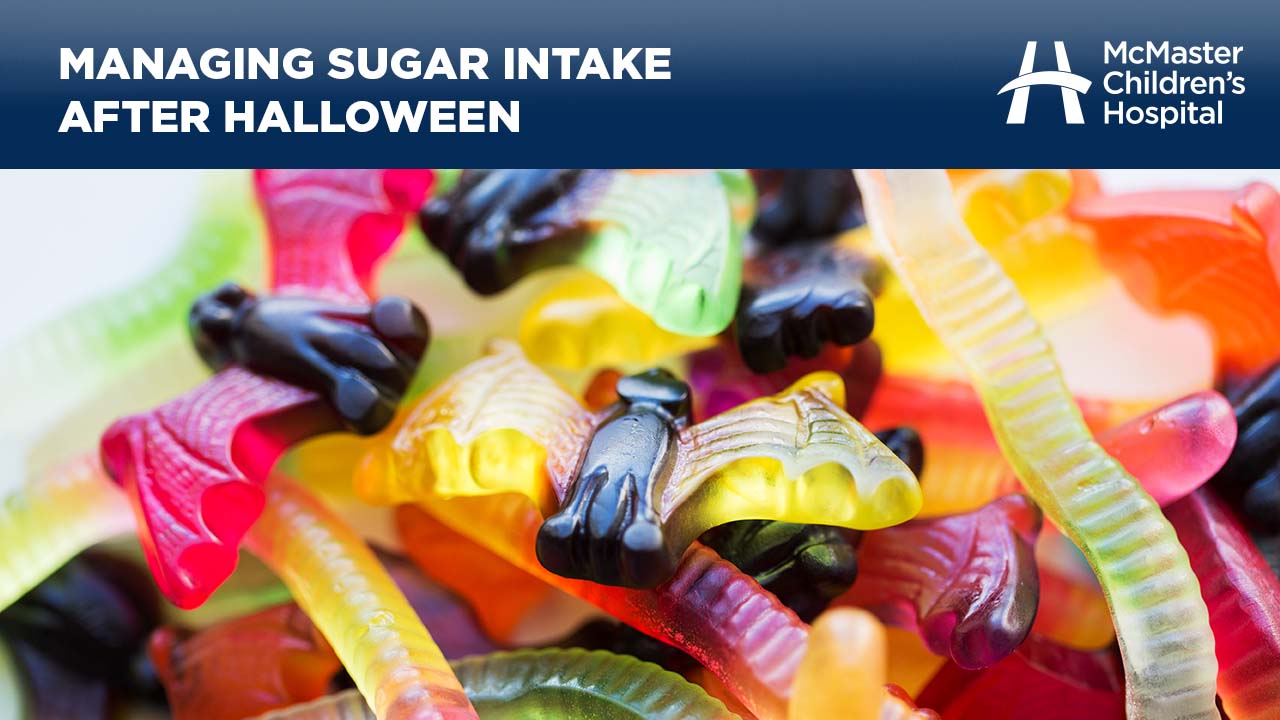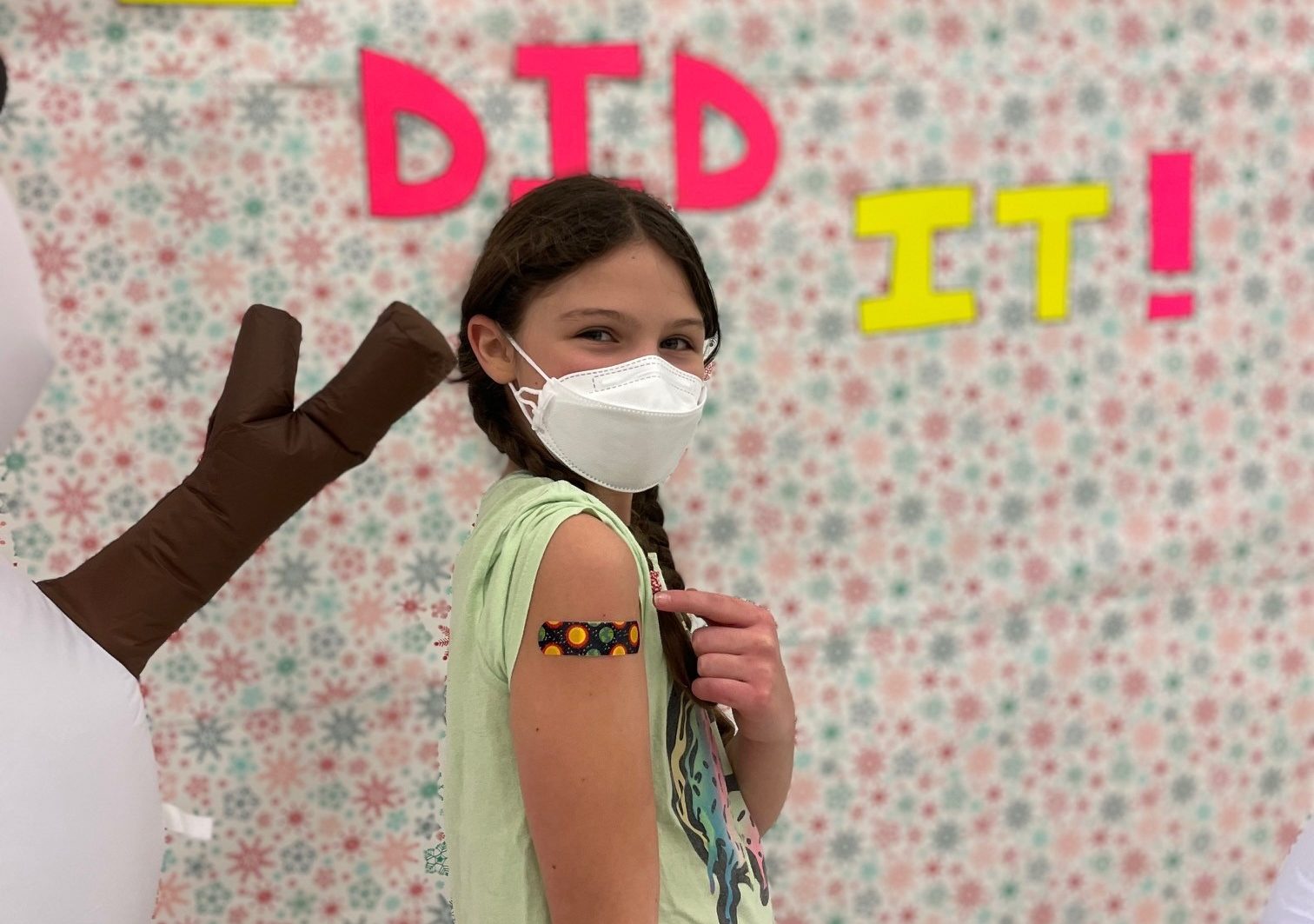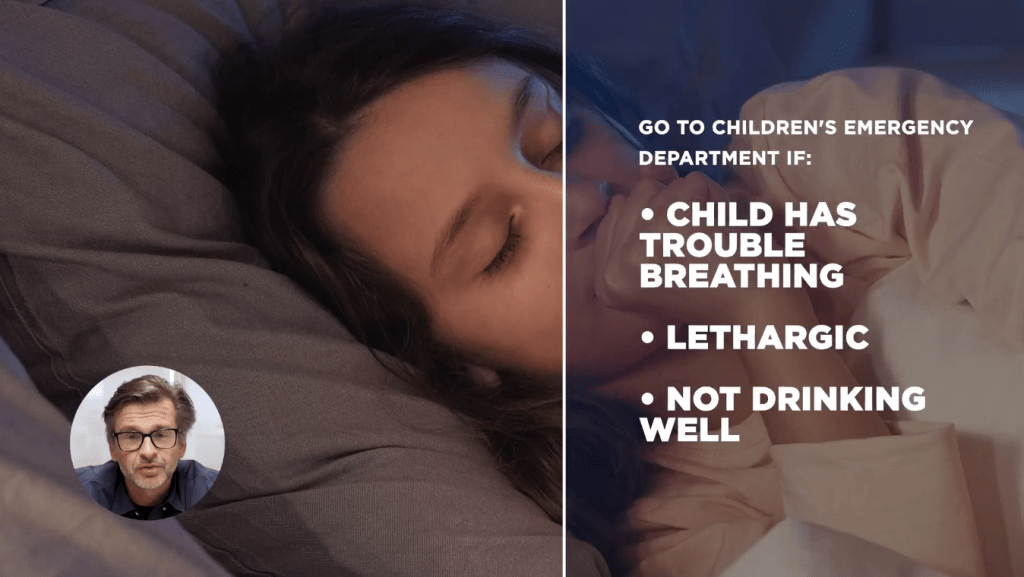
Dr. Christopher Sulowski, chief of the pediatric emergency department at McMaster Children’s Hospital, shares how to manage coughing and breathing issues at home, and when it’s appropriate to visit your family doctor or the emergency department.
What to do if your child has a cough or breathing issues
A cough alone is not necessarily concerning, but pay attention to how your child is breathing when they are not coughing.
Dr. Christopher Sulowski, chief of the pediatric emergency department at McMaster Children’s Hospital, shares some tips for coughing or breathing issues.
Breathing issues?
Signs that your child is having breathing issues:
- Increased breathing rate
- Increased heart rate
- Wheezing
- Nostril flaring
- Grunting
- The chest sinks with each breath
When to come to the emergency department
Come to the emergency department if:
- Your child is breathing too fast between coughing. “Too fast” varies by age but a general rule is about once every second.
- Your child is less than three months old and has a fever
- Your older child has a fever for more than 5 days
- Your child has trouble breathing, is not drinking well, or seems lethargic
Managing at home
If your child is breathing normally between coughing, try:
- Honey to soothe their throat if they are more than one year old
- Over-the-counter cough medicines if they are older than 6 years old
- Tylenol or Advil to reduce a fever if they have one (fevers can make children breathe faster)
- 2-4 puffs of Ventolin or Salbutamol, known as the “blue puffer” if they already use a puffer
If your child’s breathing improves, watch them closely at home. For a chronic, long lasting cough, call your family doctor.

